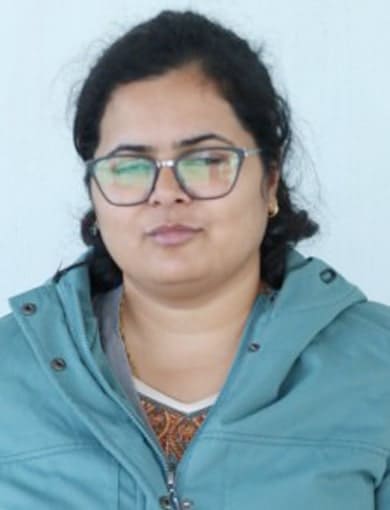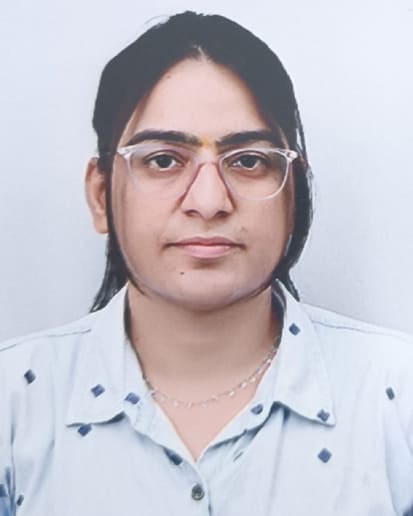Department of Animal Genetics and Breeding imparts basic practical training in biostatistics using computer software on collection, compilation and tabulation of scientific data for interpretation and comparison of results. Courses on various aspects genetics and breeding of pet, small and large and zoo animals are offered by the department.
The Department has following sanctioned strength of Faculty:
Professor - 1
Associate Professor – 1
Assistant Professors – 1
COURSES AND SYLLABI
S.No.
|
Name
|
Designation
|
Qualification
|
Service Period at AVC
|
Photo
|
Biodata |
|
01
|
Dr. T. V. Aravindakshan
|
Professor
|
B.V.Sc & AH, M.V.Sc and PhD
|
07.08.2024 to till Continue
|
 |
Biodata |
|
02
|
Dr. Mona Sharma
|
Assistant Professor
|
B.V.Sc & AH, M.V.Sc and PhD
|
20.04.2022 to till Continue
|
 |
Biodata |
|
03
|
Dr. Nistha Yadav
|
Assistant Professor
|
B.V.Sc & AH, M.V.Sc and PhD
|
17.05.2024 to till Continue
|
 |
Biodata |
COURSES AND SYLLABI
THEORY
UNIT-1 (BIOSTATISTICS AND COMPUTER APPLICATION)
Biostatistics: Introduction and importance of statistics and biostatistics, Classification and tabulation of data. Parameter, Statistic and Observation. Graphical and diagrammatic representation of data. Measures of Central tendency (simple and grouped data). Measures of Dispersion (simple and grouped data). Probability and probability distributions: Binomial, Poisson and Normal. Moments, Skewness and Kurtosis. Correlation and Regression. Introduction of sampling methods.
Tests of hypothesis- t and Z- tests. Chi-square test. Design of experiment- Completely randomized design (CRD). Randomized block design (RBD). Analysis of variance and F-test of significance. Introduction to Non-parametric tests. Computer Application: Introduction to computer languages. Data Base Management. Review of MS-Office and its components (MS-Word, Excel, Power Point and Access). Analysis of data using MS-Excel. Concepts of computer networks, internet & e-mail.
UNIT-2 (PRINCIPLES OF ANIMAL AND POPULATION GENETICS)
Animal Genetics: History of Genetics. Mitosis vors Meiosis. Chromosome numbers and types in livestock and poultry. Overview of Mendelian principles. Modified Mendelian inheritance. Pleiotropy, Penetrance and expressivity. Multiple alleles; lethals; sex-linked, sex limited and sex influenced inheritance. Sex determination. Linkage, crossing over and construction of linkage map. Mutation, Chromosomal aberrations. Cytogenetics, Extra-chromosomal inheritance. Molecular genetics, nucleic acids-structure and function. Gene concept, DNA and its replication. Introduction to molecular techniques. Population Genetics: Introduction to population genetics; individual vors population. Genetic structure of population: Gene and genotypic frequency. Hardy - Weinberg law and its application. Forces changing gene and genotypic frequencies (eg Mutation, migration, selection and drift). Quantitative vors qualitative genetics; concept of average effect and breeding value. Components of Variance. Concept of correlation and interaction between Genotype and Environment. Heritability and Repeatability. Genetic and Phenotypic Correlations.
UNIT-3 (PRINCIPLES OF ANIMAL BREEDING)
Livestock and Poultry Breeding: History of Animal Breeding. Classification of breeds. Economic characters of livestock and poultry and their importance. Selection, types of selection, response to selection and factors affecting it. Bases of selection: individual, pedigree, family, sib, progeny and combined, indirect selection. Method of selection, Single and Multi trait. Classification of mating systems. Inbreeding coefficient and coefficient of relationship. Genetic and phenotypic consequences of inbreeding, inbreeding depression, application of inbreeding. Out breeding and its different forms. Genetic and phenotypic consequences of outbreeding, application of outbreeding, heterosis. Systems of utilization of heterosis; Selection for combining ability (RS and RRS). Breeding strategies for the improvement of dairy cattle and buffalo. Breeding strategies for the improvement of sheep, goat, swine and poultry. Sire evaluation. Open nucleus breeding system (ONBS). Development of new breeds or strains. Current livestock and poultry breeding policies and programmes in the state and country. Methods of conservation- livestock and poultry conservation programmes in the state and country. Application of reproductive and biotechnological tools for genetic improvement of livestock and poultry. Breeding for disease resistance. Breeding of pet, zoo and wild animals: Classification of dog and cat breeds. Pedigree sheet, selection of breeds and major breed traits. Breeding management of dogs and cats. Common pet birds seen in India and their breeding management. Population dynamics and effective population size of wild animals in captivityorzooornatural habitats. Planned breeding of wild animals. Controlled breeding and assisted reproduction. Breeding for conservation of wild animals.
PRACTICAL
UNIT-1 (BIOSTATISTICS AND COMPUTER APPLICATION)
Collection, compilation and tabulation of data. Estimation of measures of central tendency (mean, median, mode) for simple and grouped data. Estimation of measures of dispersion (Range, standard deviation, standard error, variance, and coefficient of variation) for simple and grouped data. Graphical and diagrammatic representation of data. Estimation of correlation and regression. Simple probability problems, Normal distribution. Tests of significance: t-test, Z – test, square, F- tests. Completely randomized design (CRD). Randomized block design (RBD). Computer basics and components of computer. Simple operations: internet and e-mail, Entering and saving biological data through MS-Office (MS-Excel)
UNIT-2 (PRINCIPLES OF ANIMAL AND POPULATION GENETICS)
Monohybrid, Dihybrid cross and Multiple alleles. Modified Mendelian inheritance and sex linked inheritance. Linkage and crossing over. Demonstration of Karyotyping in farm animals. Calculation of gene and genotypic frequencies, Testing a population for Hardy-Weinberg equilibrium. Calculation of effects of various forces that change gene frequencies. Computation of population mean, average effect of gene and gene substitution and breeding value. Estimation of repeatability, heritability, genetic and phenotypic correlations.
UNIT-3: (PRINCIPLES OF ANIMAL BREEDING)
Computation of selection differential and intensity of selection, Generation interval, expected genetic gain, correlated response, EPA and Most probable producing ability (MPPA). Estimation of inbreeding and relationship coefficient. Estimation of heterosis. Computation of sire indices. Computation of selection index.
ANNUAL EXAMINATION
PAPERS UNITS MAXIMUM MARKS WEIGHTAGE
THEORY
Paper-I 1 and 2 100 20
Paper-II 3 100 20
PRACTICAL
Paper-I 1 and 2 60 20
Paper - II 3 60 20
INTERNAL ASSESSMENT 20